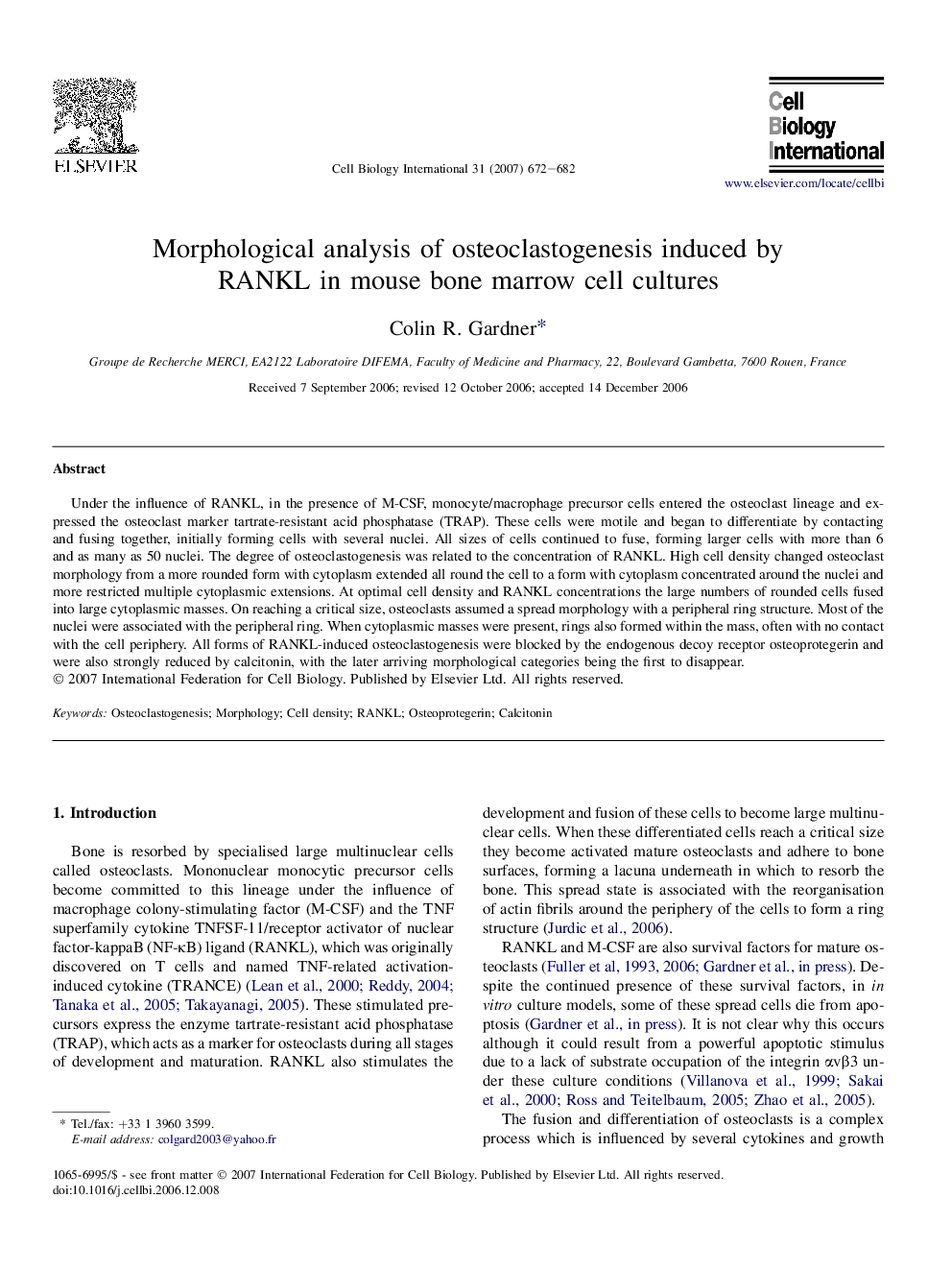| کد مقاله | کد نشریه | سال انتشار | مقاله انگلیسی | نسخه تمام متن |
|---|---|---|---|---|
| 2067718 | 1077906 | 2007 | 11 صفحه PDF | دانلود رایگان |
عنوان انگلیسی مقاله ISI
Morphological analysis of osteoclastogenesis induced by RANKL in mouse bone marrow cell cultures
دانلود مقاله + سفارش ترجمه
دانلود مقاله ISI انگلیسی
رایگان برای ایرانیان
کلمات کلیدی
موضوعات مرتبط
علوم زیستی و بیوفناوری
بیوشیمی، ژنتیک و زیست شناسی مولکولی
بیوفیزیک
پیش نمایش صفحه اول مقاله

چکیده انگلیسی
Under the influence of RANKL, in the presence of M-CSF, monocyte/macrophage precursor cells entered the osteoclast lineage and expressed the osteoclast marker tartrate-resistant acid phosphatase (TRAP). These cells were motile and began to differentiate by contacting and fusing together, initially forming cells with several nuclei. All sizes of cells continued to fuse, forming larger cells with more than 6 and as many as 50 nuclei. The degree of osteoclastogenesis was related to the concentration of RANKL. High cell density changed osteoclast morphology from a more rounded form with cytoplasm extended all round the cell to a form with cytoplasm concentrated around the nuclei and more restricted multiple cytoplasmic extensions. At optimal cell density and RANKL concentrations the large numbers of rounded cells fused into large cytoplasmic masses. On reaching a critical size, osteoclasts assumed a spread morphology with a peripheral ring structure. Most of the nuclei were associated with the peripheral ring. When cytoplasmic masses were present, rings also formed within the mass, often with no contact with the cell periphery. All forms of RANKL-induced osteoclastogenesis were blocked by the endogenous decoy receptor osteoprotegerin and were also strongly reduced by calcitonin, with the later arriving morphological categories being the first to disappear.
ناشر
Database: Elsevier - ScienceDirect (ساینس دایرکت)
Journal: Cell Biology International - Volume 31, Issue 7, July 2007, Pages 672-682
Journal: Cell Biology International - Volume 31, Issue 7, July 2007, Pages 672-682
نویسندگان
Colin R. Gardner,